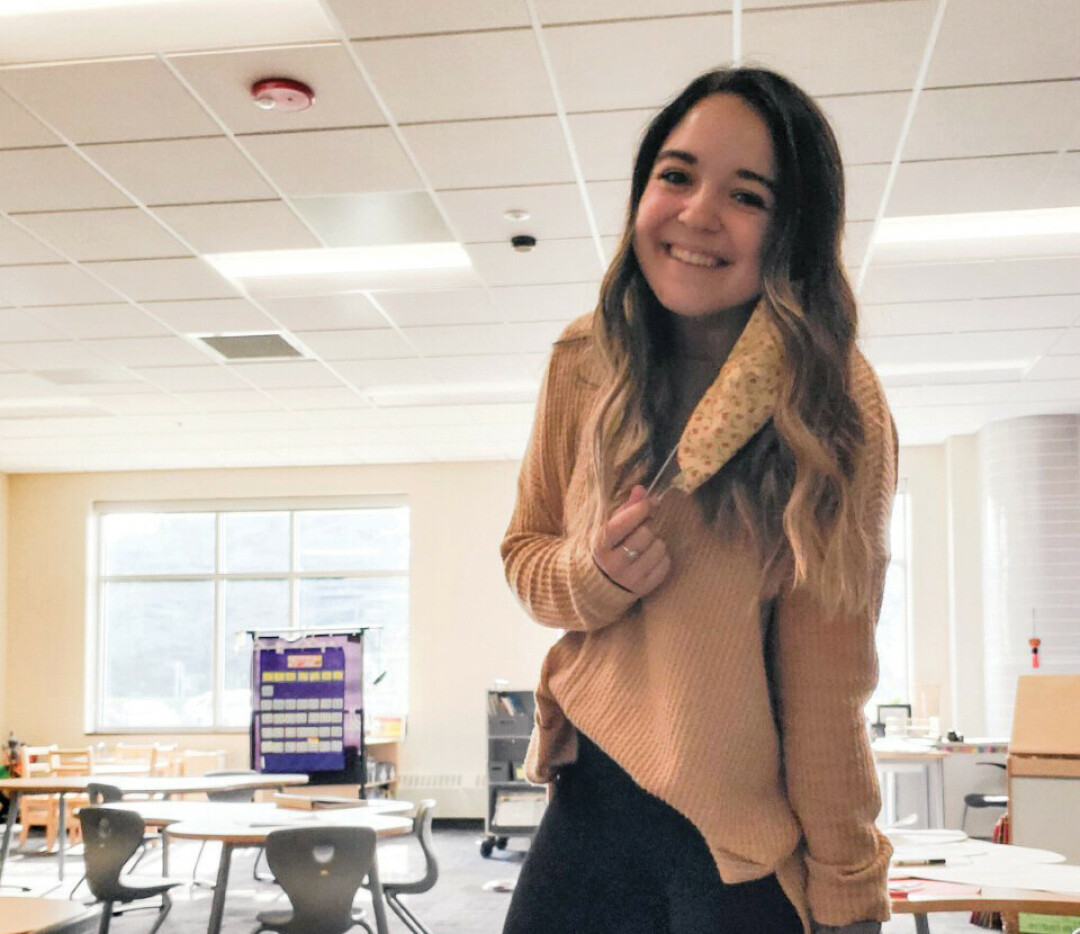Education Majors Adapt to Student Teaching Challenges During Pandemic
college students and youngsters learn flexibility, both in-person and virtually

UW-Stout early childhood education majors are applying new skills in their student teaching practices as school districts adapt learning methods and environments to safeguard students, teachers, and communities during the pandemic.
Tracy DeRusha, field experience coordinator in the School of Education, coordinates student teaching placements. “Every district is handling this situation in a way that works best for them, which can vary between school districts,” she said.
“We didn’t train our students for virtual teaching,” added Professor Jill Klefstad, supervisor of student teaching. “But as their supervisor, I say they are lucky. This is the new lay of the land.”
Klefstad hopes her students can advocate for themselves, use the new skills they’ve learned in virtual teaching in their upcoming careers and learn to be flexible and open in their virtual student teaching experiences.
“I hope students can also build a partnership with their cooperating teacher,” she said. “It’s a valuable opportunity to create a bond in a vulnerable state. It’s important for the student teacher to support the classroom teacher as they both strive to make sure the young students’ needs are put first.”
Adapting to Meet Students’ Needs
UW-Stout students such as Alexa Williams, who completed her final semester of student teaching in the fall, had to adapt everything they’ve learned and find new techniques to meet students’ needs, making meaningful connections, and preparing for their careers.
Williams’ student teaching experience began in August in a kindergarten classroom at Ellsworth Elementary School. She feels she built a relationship of trust with her students, cooperating teacher and the school.
Later in the semester, her primary placement was in a first-grade classroom at Ellsworth. However, three days into her placement she needed to quarantine and began virtually teaching the school’s quarantined first-graders. The number of students varied day to day, but her class size averaged six to seven students per week, she said.
“It’s a unique situation,” she said. “Teachers have to be incredibly creative and think on their toes. This is a heightened version of that. It’s an enormous challenge teaching first-graders virtually. If anyone is able to handle the ebb and flow of this situation though, it’s going to be teachers. This online experience has shown what we’re capable of.”
Because she had already established a relationship with the school, Williams was given the freedom to create her own curriculum for her virtual learners as she navigates teaching and learning online.
“To have that trust is so important to get the full experience to what it will be like when you’re on your own,” Williams said.
Williams feels she was able to make deeper connections with her kindergartners. Being there in person, she could see their needs more clearly and offer better support. Her virtual students were not as engaged because her presence was different, she said.
Virtual Connections Can Be Harder
She connected with her virtual students, but it was harder, she thinks. The computer screen between them acted as a wall – they saw the screen and not necessarily the person on it. And having different students week to week made building connections difficult, too.
Williams sees the good and the bad of virtual learning for her students. On one hand, they’re learning hands-on technology, which they’ll use going forward. But on the other hand, a lot of responsibility is wrapped up in that technology. First-graders must learn how to use and care for their technology properly, how to complete assignments and submit work all online.
She’d rather see the kids play. And she often felt powerless to help them because she couldn’t see the work in front of them or see their screen to help. “I can’t see them put pencil to paper, and I can’t point to their screen if they need help finding something.”
“It’s not always fun teaching online, but it’s also something I wouldn’t trade up. It’s better than not seeing them at all,” Williams said. “And because we’re online, we don’t have to wear masks. I get to see the kids’ smiles. That’s a big perk.”
Williams always tries to learn from her students. This year, she’s learned not to take life so seriously. As a teacher, she is held responsible for so many things and there is so much expected of her, she feels. She tries to draw the line between taking care of her students and remembering to take care of herself, knowing teachers struggle with burn-out and self-doubt. She’s passed this motto on to her cooperating teachers.
“There are a million different ways to do things, and there’s not a right or wrong way,” Williams said. “If you’re doing your job with quality in mind, you’re doing it well. I try to take things slow and think how things can benefit my students and how it will affect me outside of school.”
This has been a learning journey for Williams and her first-graders. “It’s hard to know what students are going through right now. They are so young; they don’t know how to express what they’re feeling. I don’t think we’ll see the true effect until later,” she said. “But they’re so smart. We can be transparent in the best way we can in everything happening in our world, show them support and listen and let them know we’re here to help.”




















